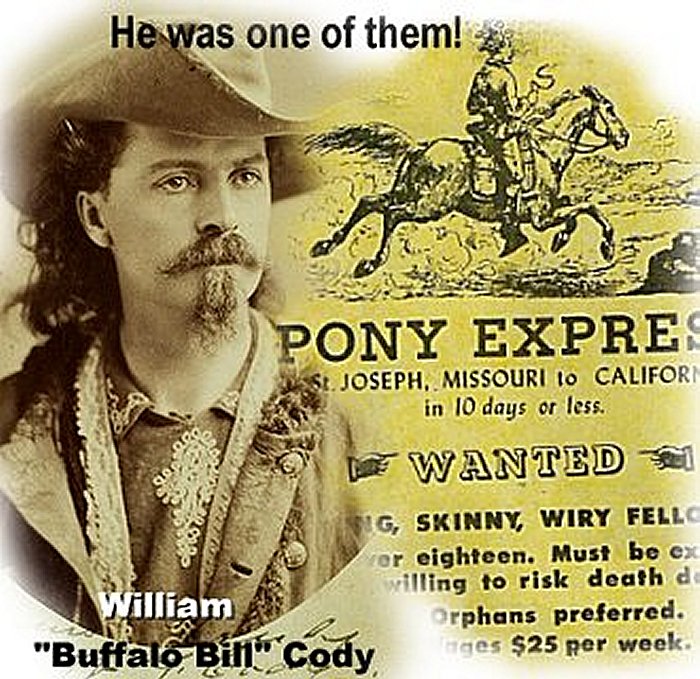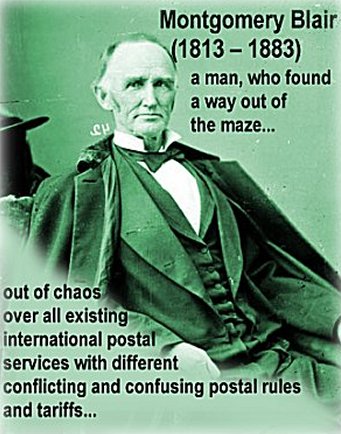Struggle To Get Mail On Time Has Lasted More Than 5,000 Years – Part 3
A. Sutherland - AncientPages.com - It was far less likely that someone would give obscene messages directly to a postman.
Until the 1800s, people who wanted to send their letters, had to look after a man walking through the town's streets to gather all packages and letters to deliver them to the post office.
The people had long depended on special messengers or entrusted their mail to travelers for delivery.
The first truly public postal system is credited to France and was initiated by King Louis XI in 1464.
In 1591, England could organize a public postal system during the reign of Queen Elizabeth.
However, there was something very chaotic over all existing international postal services with different conflicting and confusing postal rules, tariffs, etc.
What the worldwide postal system really needed was to make its global modification much more efficient. In other words, an international organization was needed to be simpler! Different postal agreements between countries became a solution.
Montgomery Blair (1813 – 1883) was a man, who found a way out of this maze introducing several innovations into the international postal service.
Eleven years later, all complicated rules regarding international postal system were gone.
But what was the situation in the USA in the 1800s?
In the middle of the 1800s, large parts of USA still constituted desolate wilderness. Clearly, there was an invisible barrier between East and West of the great country.
The United States decided to open the western frontier to "rapid communication" with the Pony Express, a privately-funded mail service. Pony Express operated only 18 months, from April 3, 1860 to October 24, 1861 but was of great importance for the Americans.
The service covered 1,966 miles from St. Joseph, Mo. to Sacramento, California and it could take several months to send mail to California by boat via South America.
The horse relay finished the journey in just 10 days. Pony Express Company, which was a commercial and not a state-sponsored or military enterprise, had post stations and used horses to ferry mail, the practice that dates back to antiquity.
However, from the beginning, the company had rather precarious existence.
Did the founders believe in the long-lasted existence of Pony Express? In fact, they did not.
The problems were not only due to the rigors of the trail.
To organize fully functioning company, it would require 190 Pony Express stations situated from 10 to 15 miles apart, in five divisions along its 1966 mile route, more than 400 station workers, about 500 horses and more than 200 riders.
The cost of such enormous commitment was large, in other words... too large. Even, the high rate of $15 per ounce for Pony Express delivery did not cover the costs.
See also:
Struggle To Get Mail On Time Has Lasted More Than 5,000 Years – Part 1
Struggle To Get Mail On Time Has Lasted More Than 5,000 Years – Part 2
Although the Pony Express delivered the mail across the country within the 10 day time limit, financially it was a disaster.
Another problem was caused by Indian raids. The Paiute Indians who lived in the areas systematically attacked the Pony Express stations. During the Paiute War in the spring of 1860, seven stations were burned, 150 horses were lost and 16 men were killed at a cost of $75,000.
Very tough and skillful, young riders worked for the company. The horses of the Pony Express were grain fed and had great endurance. The pay for a Pony Express rider was between $100 and $150 per month. Although they were only supposed to ride 75 miles, they often rode much more in a single trip, due to a lack of available riders.
Do you remember William “Buffalo Bill” Cody? He was one of them!

The last rider went out on October 26, 1861. The Pony Express had completed 380 runs each way, covering more than 616,000 miles.
It delivered 34,753 pieces of mail.
At a time, when the North and South of the nation were pulling apart, the Pony Express made a great job - helped the East and West of this great country connect together!
The Pony Express operated for only 18 months but it will always be remembered and its legend must go on...
Stephensons Rocket was the world's first modern steam locomotive and the railways expanded quickly from 1830 both in Europe and USA. Steamers sailing across the Atlantic Ocean, could deliver mail in 12 days instead of 30-36 days. Mail began to "travel" fast and today, modern postal systems can deliver mail by ship, road, or aeroplane.
Pre-modern systems were exclusively road-based networks relying on foot-couriers or riders on horseback. Mail was delivered by cannons, dog sleighs, skis, guns and hot air balloons, all had to be done to get the mail on time!
In France, in the region of Landes, postmen had to walk on high stilts to cross the wide marsh. Even today, Havasupai Indians, a Native American tribe living in the northwestern part of Arizona, get their mail delivered by mule. They are the only permanent inhabitants in the Grand Canyon, where they have lived for over 800 years.
They live at the foot of the Grand Canyon and a 10 km a steep, narrow path is the only way leading to them. It is not easy to deliver mail to them, but a mule is able to do it.
Delivery of letters has been one of the greatest concerns of mankind for at least five millennia.
Written by – A. Sutherland AncientPages.com Staff Writer
Part 2 of this article - here.
Copyright © AncientPages.com All rights reserved. This material may not be published, broadcast, rewritten or redistributed in whole or part without the express written permission of AncientPages.com
More From Ancient Pages
-
 Ancient Native Americans’ Encounter With The Star People – An Otherworldly Rescue?
Featured Stories | Jul 20, 2021
Ancient Native Americans’ Encounter With The Star People – An Otherworldly Rescue?
Featured Stories | Jul 20, 2021 -
 Rare Byzantine Gold Coin Discovered In Norway – Was It Brought By Harald Hardrada From Constantinople
Archaeology | Dec 12, 2023
Rare Byzantine Gold Coin Discovered In Norway – Was It Brought By Harald Hardrada From Constantinople
Archaeology | Dec 12, 2023 -
 10 Mysterious Ancient Manuscripts With Hidden Secrets
Featured Stories | May 27, 2016
10 Mysterious Ancient Manuscripts With Hidden Secrets
Featured Stories | May 27, 2016 -
 Four Roman-Era Brooches And A Ring Found In The Borki Forest, Poland
Archaeology | Mar 15, 2024
Four Roman-Era Brooches And A Ring Found In The Borki Forest, Poland
Archaeology | Mar 15, 2024 -
 Mother, Father, Child, Marriage And Divorce In Viking Society
Ancient History Facts | Apr 27, 2020
Mother, Father, Child, Marriage And Divorce In Viking Society
Ancient History Facts | Apr 27, 2020 -
 Ancient DNA Sheds Light On How The Caribbean Islands Were Settled
Archaeology | Jun 24, 2020
Ancient DNA Sheds Light On How The Caribbean Islands Were Settled
Archaeology | Jun 24, 2020 -
 Skeleton Of Irish Giant Charles Byrne Will Not Be Displayed In The Hunterian Museum In London
Historical Figures | Jan 13, 2023
Skeleton Of Irish Giant Charles Byrne Will Not Be Displayed In The Hunterian Museum In London
Historical Figures | Jan 13, 2023 -
 On This Day In History: 4000 Defenders Of Pilėnai Commit Mass Suicide When Attacked By Teutonic Knights – On Feb 25, 1336
News | Feb 25, 2017
On This Day In History: 4000 Defenders Of Pilėnai Commit Mass Suicide When Attacked By Teutonic Knights – On Feb 25, 1336
News | Feb 25, 2017 -
 Tangaroa – Polynesian God Of Ocean And Fish In Constant Struggle With His Brother
Myths & Legends | Jun 2, 2020
Tangaroa – Polynesian God Of Ocean And Fish In Constant Struggle With His Brother
Myths & Legends | Jun 2, 2020 -
 On This Day In History: Charter Of The Forest Was First Issued On London – On Nov 6, 1217
Featured Stories | Nov 6, 2016
On This Day In History: Charter Of The Forest Was First Issued On London – On Nov 6, 1217
Featured Stories | Nov 6, 2016 -
 Mystery Of Ancient New York Giants – Who Was Really Buried In The Druid Barrow?
Featured Stories | Oct 28, 2017
Mystery Of Ancient New York Giants – Who Was Really Buried In The Druid Barrow?
Featured Stories | Oct 28, 2017 -
 Hundreds Of Fascinating 24,000-Year-Old Cave Paintings Discovered In Eastern Iberia
Archaeology | Sep 11, 2023
Hundreds Of Fascinating 24,000-Year-Old Cave Paintings Discovered In Eastern Iberia
Archaeology | Sep 11, 2023 -
 Sumerian Stele Of The Vultures: Oldest Known Historical Records Carved On Limestone
Featured Stories | Sep 1, 2016
Sumerian Stele Of The Vultures: Oldest Known Historical Records Carved On Limestone
Featured Stories | Sep 1, 2016 -
 Interbreeding With Modern Humans Wiped Out Neanderthals’ Y Chromosomes 100,000 Years Ago
Archaeology | Sep 28, 2020
Interbreeding With Modern Humans Wiped Out Neanderthals’ Y Chromosomes 100,000 Years Ago
Archaeology | Sep 28, 2020 -
 Ornamental Bronze Wall Plate Unearthed In Ayanis Castle Built By Urartian King Rusa II
Archaeology | Sep 13, 2022
Ornamental Bronze Wall Plate Unearthed In Ayanis Castle Built By Urartian King Rusa II
Archaeology | Sep 13, 2022 -
 Why Did Ancient Humans Have Same Sense Of Smell, But Different Sensitivities?
Archaeology | Jan 6, 2023
Why Did Ancient Humans Have Same Sense Of Smell, But Different Sensitivities?
Archaeology | Jan 6, 2023 -
 Mystery Of The Delphi Oracle Prophecies: Was Pythia On Drugs While Guiding Ancient Greek Civilization For Thousands Of Years?
Civilizations | Nov 3, 2016
Mystery Of The Delphi Oracle Prophecies: Was Pythia On Drugs While Guiding Ancient Greek Civilization For Thousands Of Years?
Civilizations | Nov 3, 2016 -
 2,000-Year-Old Knife With Denmark’s Oldest Runes Found On Funen
Artifacts | Jan 22, 2024
2,000-Year-Old Knife With Denmark’s Oldest Runes Found On Funen
Artifacts | Jan 22, 2024 -
 Jörmungandr – Hideous Poison-Spewing Midgard Serpent Was One Of Loki’s Children
Featured Stories | Mar 31, 2018
Jörmungandr – Hideous Poison-Spewing Midgard Serpent Was One Of Loki’s Children
Featured Stories | Mar 31, 2018 -
 Mystery Of The Ancient Giant Wish Stone At Hattusa
Featured Stories | Oct 1, 2019
Mystery Of The Ancient Giant Wish Stone At Hattusa
Featured Stories | Oct 1, 2019


